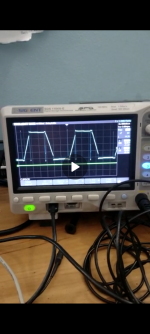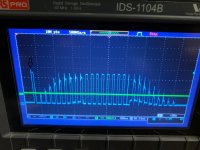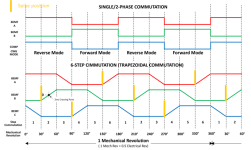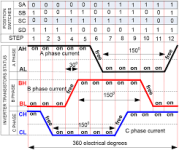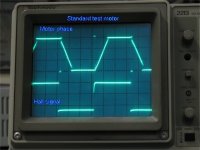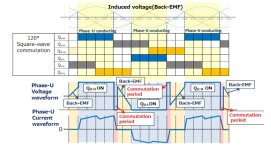trialspower2
100 W
- Joined
- Dec 31, 2016
- Messages
- 108
I am having issues with a voltage spike which is generated on each winding when it is released from zero volts as it enters its 'switched off' segment. This is worst at very low RPM, and gets smaller as the motor speed increases. The controller is running in synchronous rectification on a normal 6 step BLDC control.
When considering the commutation of a BLDC motor, each phase effectively does two segments high, one segment switched off, two segments low, one segment switched off. The spike always appears after the low period at low RPM under high current. The higher the current the higher the spike.
I have always had this issue, and have had to run higher gate resistor values to slow the switching rate. It was only earlier that I thought of something that may or may not help.
The spike appears in the region where only the high side winding stays switched on, as one phase is switch off from the low side while the other is switched on to the low side. Due to the deadtime my controller has, this effectively leaves a period where only one phase is connected and doesn't give the current anywhere to flow.
My thought today was, that maybe I should be switching the third phase low before releasing the phase which is already low. On a delta wound motor, this will then give a new path way though an extra phase to zero volts, preventing the energy going back up the phase being disconnected.
I realise this is hard to follow without any diagrams or event a proper explanation, I will try and put something together in the next day or so, but I thought someone might have had this before.
When considering the commutation of a BLDC motor, each phase effectively does two segments high, one segment switched off, two segments low, one segment switched off. The spike always appears after the low period at low RPM under high current. The higher the current the higher the spike.
I have always had this issue, and have had to run higher gate resistor values to slow the switching rate. It was only earlier that I thought of something that may or may not help.
The spike appears in the region where only the high side winding stays switched on, as one phase is switch off from the low side while the other is switched on to the low side. Due to the deadtime my controller has, this effectively leaves a period where only one phase is connected and doesn't give the current anywhere to flow.
My thought today was, that maybe I should be switching the third phase low before releasing the phase which is already low. On a delta wound motor, this will then give a new path way though an extra phase to zero volts, preventing the energy going back up the phase being disconnected.
I realise this is hard to follow without any diagrams or event a proper explanation, I will try and put something together in the next day or so, but I thought someone might have had this before.


